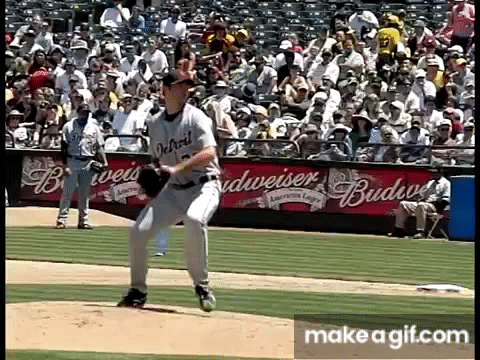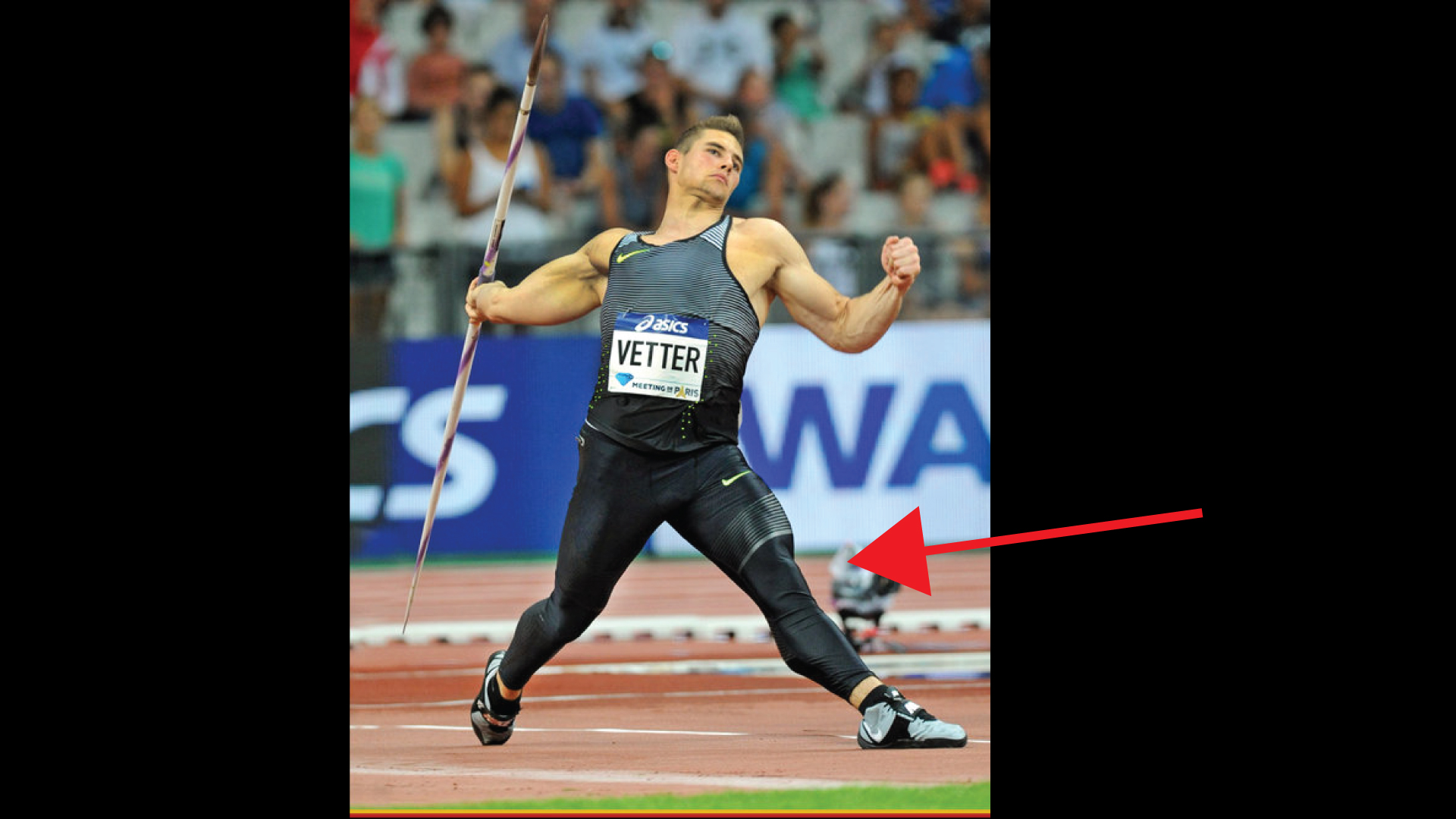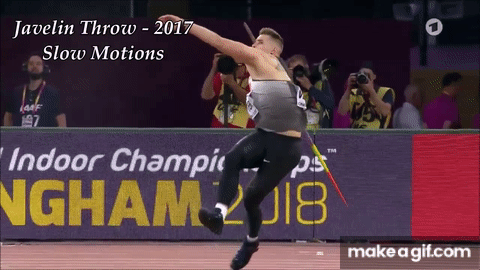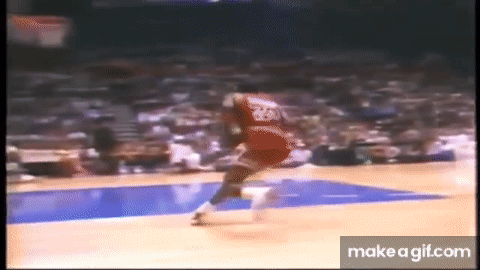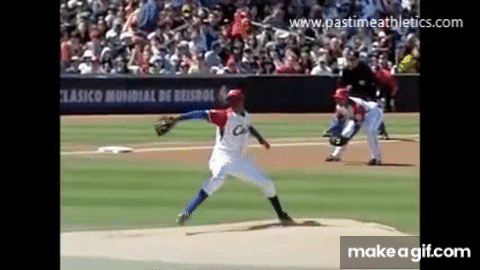The front leg is extremely important in throwing mechanics and specifically in determining ball velocity, but can the type of foot strike make a difference in the front leg’s ability to do its job?
The Role of the Front Leg in Throwing Velocity
The front leg has an important job in the pitching delivery and it can either be a major help or hindrance in terms of throwing velocity. The front leg is meant to stop forward movement and transfer the energy that has been built up through the lower body, into the trunk. This requires that the front leg effectively stiffen up prior to ball release. While many people see this as violent knee extension at landing, I think that is an incomplete view of what is actually happening. When the front foot lands, the front hip must hinge (push back into the body) which should result in the knee extending. Knee extension is a result of hip and trunk movement, not a driver of movement.
Why Does a Firm Front Leg Matter?
In a kinetic chain view of biomechanics, efficient movement of a body segment can only happen when the previously moving segment has fully decelerated thereby transferring the energy into the next segment. The lower body builds energy during the beginning part of the pitching delivery, which must then be transferred into the trunk and ultimately the arm and ball. The front leg, and the subsequent knee extension, is the nexus of this energy transfer as it decelerates the lower body allowing for the transfer of energy. Greater knee extension has been shown to correlate with longer distances in javelin throwers, which makes sense, since greater knee extension means more efficient energy transfer, therefore greater release velocity, and ultimately further throwing distance (Whiting et al., 1991).
Does the Foot Strike Matter?
While a lot is known about front leg mechanics/force/energy transfer, less is known about the mechanics/force/energy transfer of the front leg foot and ankle.
Javelin throwers are probably the most efficient throwers on the planet, and high-level javelin throwers almost exclusively land on their heels prior to their lead leg firming up and the subsequent throwing motion.
High-level high jumpers and basketball players also land on their heel at the gather phase prior to jumping. They gather their momentum by slamming their heel into the ground before energy is transferred from the ground up their legs and into their hips leading to hip extension and propulsion.
Ground reaction force (GRF) is the force exerted by the ground on a body in contact with it. When you produce high amounts of force into the ground, those forces are returned back up into the body as GRF. High GRF are associated with higher power output. For example, Erik Deporte measured elite high jumpers during an indoor competition using force plates and found that they generated between 6100 N and 7150 N at takeoff (Deporte, 1989). To put those numbers in perspective that is roughly 1400 to 1600 pounds of force. GRF is not only predictive of jump height, but also seems to play a large role in throwing velocity as well. GRF of the lead leg during pitching has been shown to be predictive of ball velocity (McNally et al., 2015). Peak GRF of the stride leg during the late cocking phase was found to be the best predictor of ball velocity (McNally et al., 2015).
Several studies have examined the benefits of a heel plant/strike in other human movements. A study of runners with different foot striking patterns found that the heel strike and midfoot strike (full foot) resulted in the highest GRF (Mercer et al., 2015). Additionally, a study of biomechanical differences between different foot strike patterns during running found that a forefoot strike pattern resulted in a more flexed knee position compared to a more extended knee position in rear foot strikers (Almeida et al., 2015). Finally, walking with a heel first strike as opposed to a forefoot strike has been shown to more effectively conserve energy through the ability to decrease the external mechanical work performed by the limbs and increase the pendular exchange of kinetic and potential energy of the center of mass (Cunningham et al., 2010). This just means that a heel strike leads to more efficient energy transfer during walking.
Can This be Applied to Pitching?
Like I discussed at the beginning of this article efficient front leg mechanics are extremely important for ball velocity, but what should the front leg action actually look like?
Well, the front knee should be pretty close to 180 degrees of extension at ball release in order to maximize energy transfer. A study of javelin throwers, examining knee extension helps illustrate this point. Researchers found that in the “short” group, the throwers’ knees were significantly more flexed at release than the “long” group, 156 and 172 degrees respectively, a 16 degree difference (Morriss et al., 1996).
Based on the various studies I’ve mentioned, a heel first landing likely results in greater GRF, a more extended knee position, and more efficient energy transfer, and therefore has the potential to increase throwing velocity. A heel first landing is not going to automatically allow you to throw 100 mph. Sequencing, mobility, strength, and power are still incredibly important, but a heel strike may be the final piece to getting 1 percent better.
Like the front knee extending, I believe a heel strike cannot be trained in isolation and likely happens for a few reasons:
First, a heel strike is likely a product of the front hip staying internally rotated as long as possible. When the front hip is internally rotated the front heel is often leading the body toward the target, so it makes sense that it would be the first to contact the ground.
Second, a heel strike is likely the result of the body mass being efficiently shifted. Javelin throwers shift their mass very efficiently leading into their final step and gain a ton of ground just prior to foot strike, leading to a heel strike. They have the advantage of a running start to create momentum, but if pitchers can effectively shift their body mass, they will be able to capture more momentum and are more likely to land with a heel strike. If the body mass is shifted forward too early a forefoot strike is likely to happen so that the athlete can catch himself and not face plant.
Third, a lack of ankle strength and mobility may lead to a forefoot strike as these athletes may lack sufficient dorsiflexion to land heel first. Greater plantarflexion is likely to lead to greater knee flexion since the calf is more active and the calf plantarflexes the foot and flexes the knee. Ankle mobility can be trained and may help lead to a more efficient front leg pattern with a heel strike.
Conclusion
Athletes who have certain elite traits; long levers, significant muscle mass, elite sequencing elsewhere, etc., may be able to create elite velocity without a heel strike. But, since we know that a more extended knee, better energy transfer, and higher GRF at the front leg leads to higher velocity, and a heel strike leads to all of these, it would seem to offer the greatest velocity potential. As an aside I see heel strike and mid foot strike as being very similar and resulting in similar benefits. A heel strike or mid foot strike (full foot) isn’t the only way to throw hard, but from my research it seems like it may be optimal for many athletes. I will explore ways to train this aspect in a future article.
Check out my video discussing the heel strike.
Resources
GIF Sources:
Photos:
Johannes Vetter by George Herringshaw
Whiting, William & Gregor, Robert & Halushka, Marie. (1991). Body Segment and Release Parameter Contributions to New-Rules Javelin Throwing. International Journal of Sport Biomechanics. 7. 111-124. 10.1123/ijsb.7.2.111.
Deporte and B. Van Gheluwe, “Ground Reaction Forces in Elite High Jumping,” J. Biomech. 22, 1002 (1989).
McNally, Michael P.; Borstad, John D.; Oñate, James A.; Chaudhari, Ajit M.W. (2015) Stride Leg Ground Reaction Forces Predict Throwing Velocity in Adult Recreational Baseball Pitchers. Journal of Strength and Conditioning Research.
John A. Mercer∗ and Sarah Horsch (2015) Heel–toe running: A new look at the influence of foot strike pattern on impact force. Journal of Exercise Science and Fitness.
Almeida MO1, Davis IS, Lopes AD. (2015) Biomechanical Differences of Foot-Strike Patterns During Running: A Systematic Review With Meta-analysis. Journal of Orthopaedic and Sports Physical Therapy.
Cunningham CB1, Schilling N, Anders C, Carrier DR. (2010) The influence of foot posture on the cost of transport in humans. Journal of Experimental Biology.
Morris C, Bartlett R (1996) Biomechanical Factors Critical for Performance in the Men’s Javelin Throw. Journal of Sports Medicine.

